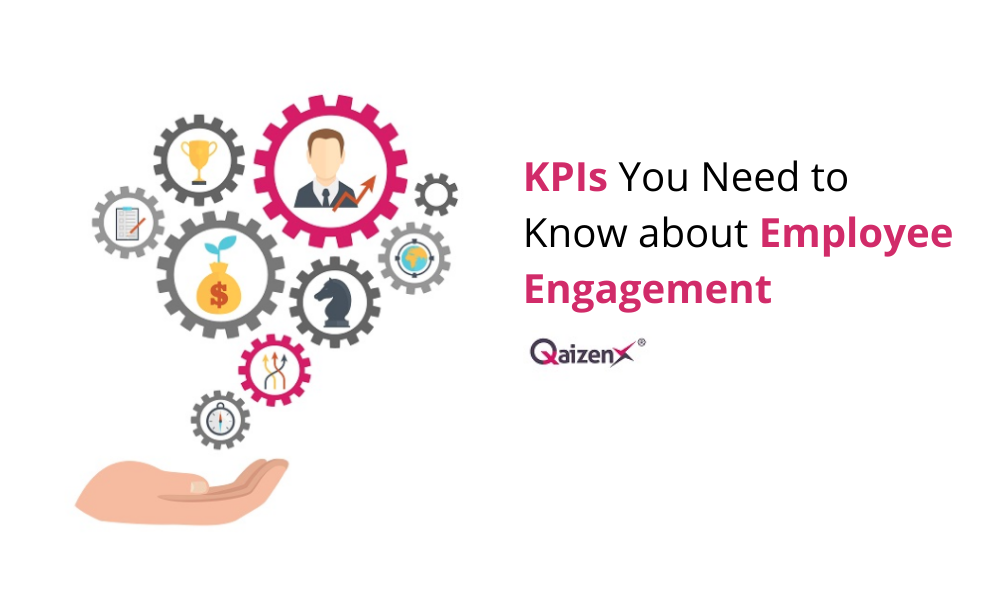33 KPIs You Need to Know about Employee Engagement

Employee engagement is a work environment culture that brings the right conditions for all the employees to give their best every day. This is all based on the organization’s objectives and qualities. Persuaded to add to hierarchical achievement, with employee’s upgraded feeling prosperity.
It depends on trust, two-way responsibility, and correspondence between you and your employees. It is a method that expands the odds of business achievement. Adding to hierarchical and individual execution, efficiency, and prosperity. It differs from poor to extraordinary.
Employee Engagement KPIs – An Important Aspect
Employee engagement gives an unmistakable comprehension to a few factors. Like, How your organization is satisfying its motivations and goals. How it is changing to meet those goals in a better way. And how people are getting a chance to present their suggestions.
It is a method of incorporating an individual from the team. Focus on clear objectives. Being trusted and enabled, getting regular and helpful feedback. Being upheld in growing new abilities and so on.
This term is all about, an organization’s values, with clear proof of trust and respect. You share two-way responsibilities and commitments among you and your employees. Your organization perceive and fulfil all the required steps in this process.
Benefits
- It increases the productivity of the employees.
- Lower the retention rate.
- Employee engagement ultimately increases the revenue of the business.
- Happier employees eventually bring you happy as well as satisfied customers.
- You get regular work from the employees without many leaves.
- Employee engagement makes your employee more trustworthy.
- Improves the quality of work at the workplace.
- More hard work you get from employees.
- Workplace culture and the environment get good and happy vibes.
- You get more innovative and creative ideas from employees.
So, we saw employee engagement and its benefits. Check the strategies to increase employee engagement.
If you are into a business where your employees are not satisfied, then you will be going to pay for it. How your business will grow if the people who are working for it are not putting their 100% into their work.
To get happier and satisfied employees there are important employee engagement KPIs (key performance indicators). They help you to get a professional yet personal environment at the workplace. These methods help organizations in 360 feedback. And getting the pool of resources for the long term. Let’s discuss them,

Employee Engagement KPIs
1. Employee Net Promoter Score:
It assesses how possible an employee can refer your organization to others as a happy place for work. You’ll get it by working out the contrast between the level of advertisers.
2. Retention/Turnover:
The turnover rate assists with investigating the tenure of the employees who quit. The organization can focus on parts that need more consideration. That’s why they maintain a turnover rate. Mainly where employees are not living it up.
3. Absenteeism:
The reason behind absenteeism is the employees’ interest in work. A high absenteeism rate addresses a low roused individual in the work area. This can be a powerful tool in employee engagement KPIs.
4. Profitability/Production:
When your employees are not locked in with the business. Then it brings less business development. In case of creation is slow or deals are down, low employee engagement is the issue without a doubt.
5. New Hire Failure Rate:
Employee engagement is an outlook. You can attract your employees in business by giving legitimate training and tools. If new employees leave the organization within the initial 90 days. They may be not content with the approaches or are not the right recruit.
6. Customer Happiness:
Happy employees imply cheerful customers. It decides your customer NPS (Net Promoter Score). Your customer NPS can be low. Low employee commitment is the explanation influencing your clients’ bliss. Research says that many employees are not happy in their working environment.
7. Use of Vacation Days:
It assesses the sound balance between fun and serious activities. That supports employee association and commitment. Moreover, vacation days utilized can likewise decide your work culture.
8. Employee Suggestion Box:
The employee suggestion box allows your employees to place their perspectives before management. Better employee engagement implies they can give important ideas. And experiences to improve usefulness.
Research says that 48% of the workers want to give their ideas and feedback. And they feel happy to get the solutions. It increases the productivity of a business.
9. Medical Services Cost of Employee:
It furnishes a superior comprehension of your association’s medical care plan components. As can be seen, the sum of medical care costs has been divided by the employee count. It is an attractive tool for employee engagement KPIs.
10. Efficiency Rate of Employees:
It assists with assessing the usefulness of your organization over the long term. You get it by the total income of the organization divided by the absolute number of employees.
11. Return on Investment:
Your organization should ensure that they should provide worthy training to resources. The ROI you get by the benefit per dollar put resources into social pay divided by the wages.
12. Retirement Rate:
Assessing the retirement rate is a critical process for any firm working on a labour force plan. You get it by the number of employees who have resigned as a level of the headcount.
13. The Average time of Retirement:
You can get it by the assessed age of all the employees resigning divided by the number of employees retiring. Know about such patterns as it assists with foreseeing retirement. And planning employee substitution ahead of time.
14. Diversity Rate:
You will get it by seeing how effective an association is in building up a climate that upholds tolerance. And open community of employees. Again an amazing factor to manage employee engagement.
15. The Total Number of D&I (Diversity and Inclusion) Initiatives Executed:
The number of D&I drives shows the organization’s devotion to staying aware of the way of life of employees. D&I carried out in your organization helps in getting the right working environments. And accomplishing the objectives of a serious business.
Many organizations frequently follow this practice to know more about resources. It helps in building bonds among employees and employers. This is by far the best method of employee engagement KPIs.
16. The Diversity of Nationalities and Ethnicities in the Workplace:
Diversity in the working environment empowers development. And keeps up with the upper hand. You can get the diversity results by checking out the employee socioeconomics.
17. Assessing the presence of recently added team members:
The performance of the new employees is different from the performance of existing employees. However, you can calculate it by arranging the performance reports. Here are the best techniques to engage new employees.
18. Fulfillment with the Hiring Process:
This gives a point of view toward how well the most common way of recruiting works according to the viewpoint of an employee. Additionally, it assists with pondering the development of an organization.
19. Cost per Hire:
It helps with assessing the measure of capital put resources into getting the best ability. It comes into use when the management system makes a hiring financial plan. Human resource people have a major role in this process.
20. The Average Time Required to Find a Hire:
It helps with finding the effectiveness of an organization about the most common way of recruiting.
21. Candidates Interviewed per Hire:
Take the complete number of candidates shortlisted and interviewed. And then divide them by the absolute number of recruits in a particular employing period.
22. The Rate of Acceptance:
Take the number of acceptance and divide it by the number of offers given by the organization. It helps with deciding the achievement pace of the employing methods of organization. You can take a test to check the business benchmarks.
23. The Percentage of Yield:
It decides the level of candidates staying after every round during the recruiting system. Assuming the rate is low, it shows a need to redesign an ugly employment opportunity. If that the speed is high, it shows a more significant number of qualified candidates who are fit to be employed.
24. Level of Employees Trained in the Workplace:
Calculate the number of employees trained at the workplace. Then you will understand the significance of organizational culture.
25. Training Effectiveness:
It helps the organization with taking a look at how agreeable the new employees feel after the training cycle has finished. Calculate it through a post-training feedback report.
26. Level of the Number of Employees Trained:
It helps with assessing how new employees are adequately incorporated into an organization. The higher rate will prompt better employee engagement and employee consistency standards.
27. Information Gained Through Training:
It assists your organization in deciding the adequacy of a training cycle. Information held by the employees during the training session is vital for the company. You get it by directing a performance review and afterwards checking the review pass rate.
28. Salary Competitiveness Ratio (SCR):
This proportion is useful in assessing the seriousness of payment decisions. By separating the average payout of the organization from the regular settlement presented by rivals in the business.
29. Deliberate Termination Rate:
Calculate it by considering the number of employee resignations and the overall number of terminations in a given period.
3o. Involuntary Termination Rate:
Consider the number of resignations over the complete number of terminations in a certain period.
31. Average Time to Fill-up a Job Opening:
It assists with monitoring how efficient your recruiting system is. The way you take time to top off an accessible employment opportunity.
32. The Rate of Attrition:
It assesses the standard for dependability. It assists the organization with discovering how fruitful they are at safeguarding abilities. Divide the absolute number of employees who have left the association in a given period. And the average number of employees in that specific period.
33. Internal Promotion Rate:
It shows the retention of employees and the development of top performers. You can get it by dividing the number of employees promoted by the absolute number of employees.
These are important employee engagement KPIs, which normally organizations use. There are many other methods to know about employees. They help you in making action plans to invest time and resources in your employees. Organizations grow with the help of their assets, which are their employees. Undoubtedly, investing in them is always a wise decision. However, investments should be careful and smart. Because wrong investment can’t be profitable.
Make your employees content and get higher profits out of them. This is the basic concept of employee engagement. Above all are quite powerful methods to apply and get results. They can help you in finding the strengths and weaknesses of your employees. And you can be able to make action plans accordingly. QaizenX is there to help you in achieving employee engagement KPIs.
Recent Posts
- How People Analytics Can Utilize Data to Drive Business Results
- The Role of AI in Enhancing Employee Feedback Systems
- How Purpose-Built AI Can Help You Build A Great Customer Experience
- Why is Customer Sentiment Analysis Crucial to Your Business?
- Customer Experience Statistics You Need To Know for 2025 | CX Statistics 2024



